Treat peri-implantitis quickly and effectively with the LAPIP protocol. Help save your patient’s implant investment with a less invasive, tissue sparing treatment with lasting results. Jump to results.
< ► > | 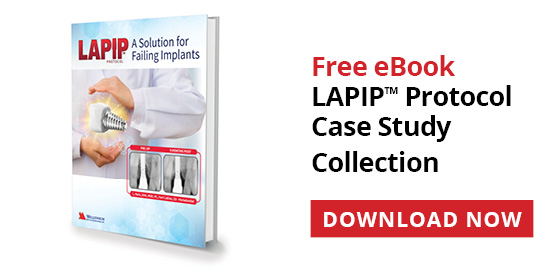 |
< ► > |  |
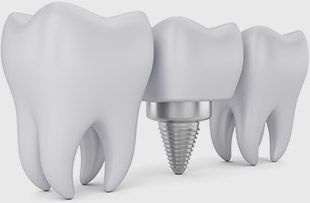 | Proven Success for Saving ImplantsThe LAPIP protocol is the only patient-friendly, predictable solution for ailing implants. Studies indicate that 94% of failing implants treated with the LAPIP protocol have reintegrated in the pocket. Because no resection or reflection of a vertically oriented flap is needed, the integrity of the structural tissue is retained. Thus all other future treatment options remain. |
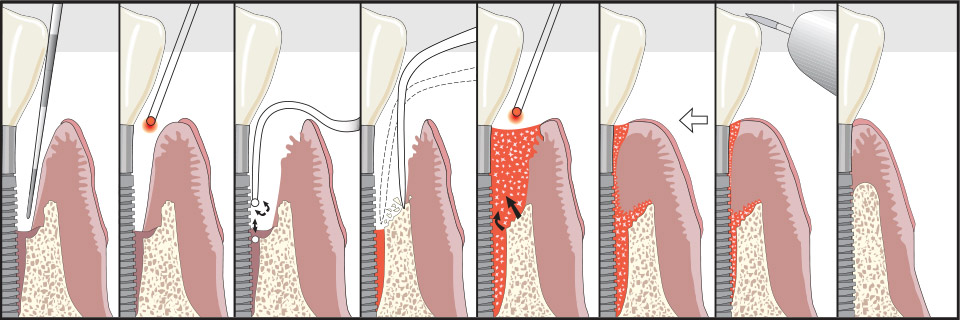
A. Perio probe indicates excessive pocket depth.
B. Laser vaporizes bacteria, diseased tissue, pathologic proteins, and titanium corrosion contaminants in soft tissue.
C. Ultrasonic scaler tips are used to remove surface accretions.
D. Bone is modified at time of surgery.
E. Laser is used to form a stable fibrin blood clot containing stem cells from bone.
F. Adhesion to clean surface, with a stable fibrin clot at the gingival crest to create a ‘closed system’.
G. Occlusal trauma is adjusted.
H. New attachment is regenerated.
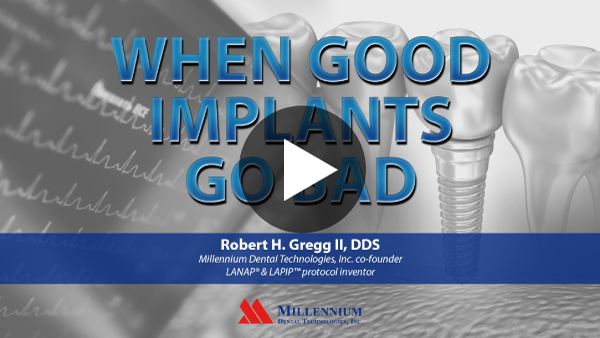 | WHEN GOOD IMPLANTS GO BADLANAP protocol inventor Robert H. Gregg II, DDS urges the dental community to consider all options before recommending and placing dental implants. |
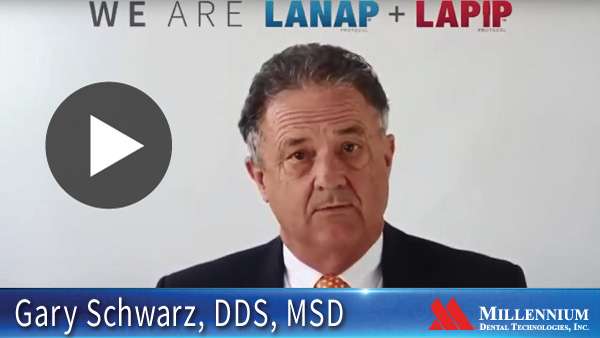 | WHAT CLINICIANS SAY ABOUT THE LAPIP PROTOCOLGary M. Schwarz, DDS, MSD on the impact of the PerioLase MVP-7 and the LAPIP protocol within his implant practice. |